|
Holiday on the Turquoise Coast |
|||
| Ancient city near Antalya | |||
| Perge | |||
| The apostles Paul and Barnabas preached here | |||
|
|
|||
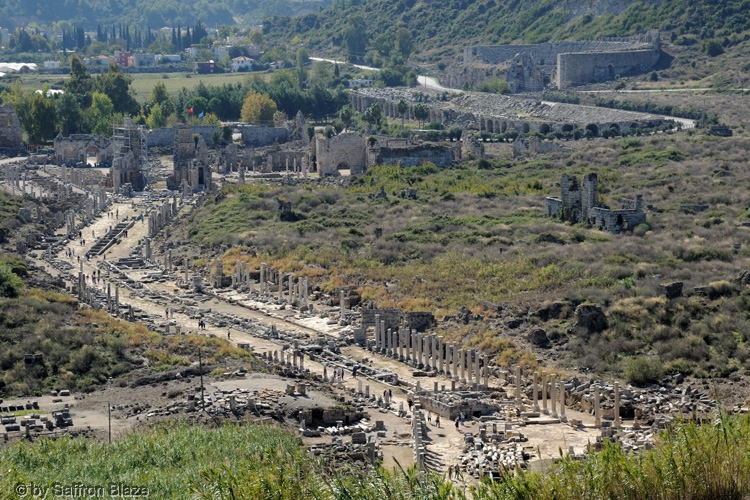 |
|||
|
You are never alone in Perge, you should know that if you want to see the really worth seeing remnants of this once so big and influential city. Due to its convenient location, 2 km away from the coastal road D400, the city is an ideal destination for the many excursion companies from Alanya to Kemer. A visit to the ancient city of Perge is now almost a must for holidaymakers on the Turkish Riviera. But however, it is worth it ! |
|||
|
The real beauty and size of the city lies in the details and can only be grasped to a rudimentary extent in a quick guided tour. The culturally interested holidaymaker will find a way to surrender to the fascination of this site without time limit. |
|||
|
The Theatre |
|||
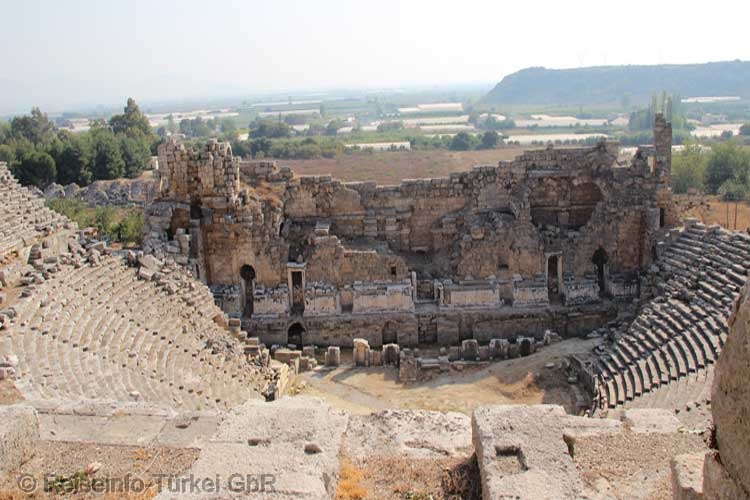 |
|||
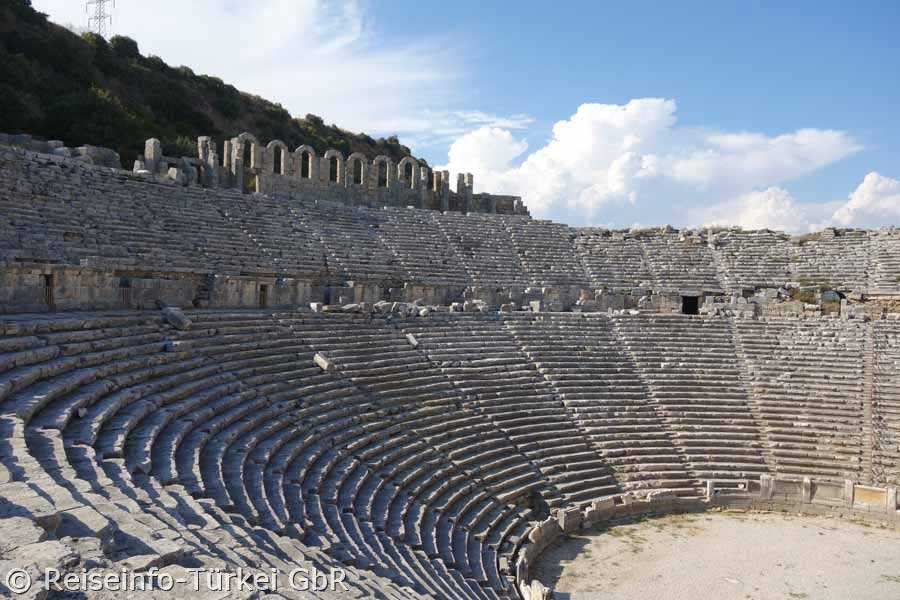 |
|||
|
According to current knowledge, the Roman theatre of Perge was probably built on a Hellenistic predecessor building between 70 AD and the middle of the 2nd century AD. Under the Roman emperor Septimius Severus (193-211 AD) the orchestra was converted into an arena. The stage house in the version visible today was probably begun under Emperor Marcus Aurelius (161-180 AD) and completed in a second construction phase around 220 AD.
|
|||
|
In recent years, the theatre has been cleared of the rubble of the centuries under the direction of Istanbul University and the stage house has been archaeologically recorded. In the meantime, after many years, tourists are allowed to enter. |
|||
| The stadium | |||
 |
|||
|
The ancient stadium, which holds about 20,000 visitors, is located between the theatre and the city. The 17 well-preserved rows of seats of the stadium, built on one level, rest on a total of 50 vaults open to the outside, most of which were used as shops. Every third vault was designed as an entrance. |
|||
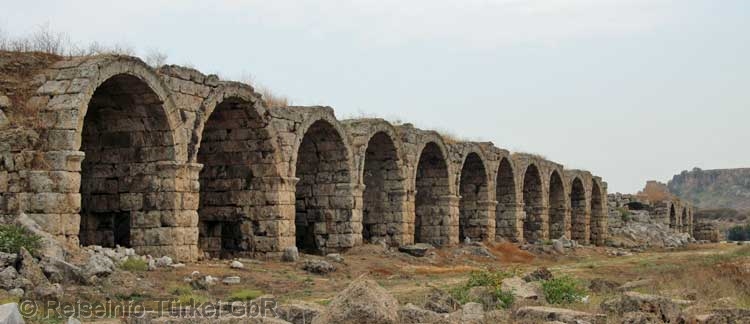 |
|||
|
The Perge stadium is one of the largest in Asia Minor, measuring 234 metres long and 54 metres wide. In the arena mainly athletic games, wrestling and boxing fights, but also bloody gladiator fights took place. |
|||
| The Agora (the central market place) | |||
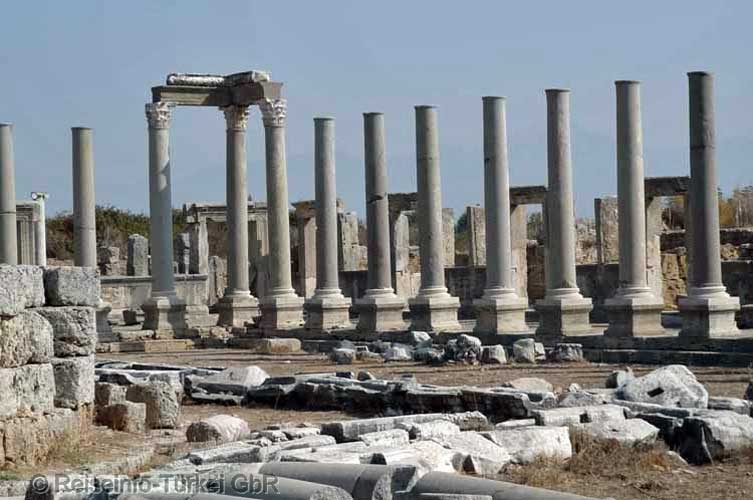 |
|||
|
In the ancient Greek and Roman
cities, the Agora was the central festival, assembly and market
place. At the same time, it was also an important social
institution. As an important place of worship, it was the venue
for many religious festivals that were decisive for the
formation of a common identity. As a place of popular and
judicial assemblies, it played an outstanding role in the
orderly coexistence of a community. In Perge, as for example in Side, there was a round temple of the goddess of luck Tyche in the middle of the agora. |
|||
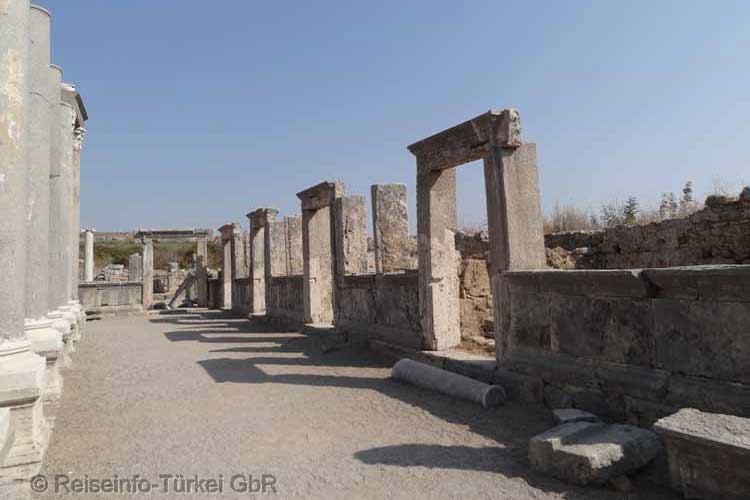 |
|||
| The market place measuring 50 x 50 metres was surrounded by covered colonnades, to which shops and administrative buildings were connected. | |||
| The Colonnaded Street | |||
 |
|||
|
The 300 metre long and 20 metre wide colonnaded street leads from the Hellenistic city gate with its horseshoe-shaped courtyard to the Kestros Nymphaeum at the foot of the Acropolis Mountain. It is flanked on both sides by high columns. Iron wheels have carved deep furrows in the stone blocks of the road surface. Remains of the many shops to the right and left of the road are still there, and on the sidewalks some remains of mosaics have been preserved. |
|||
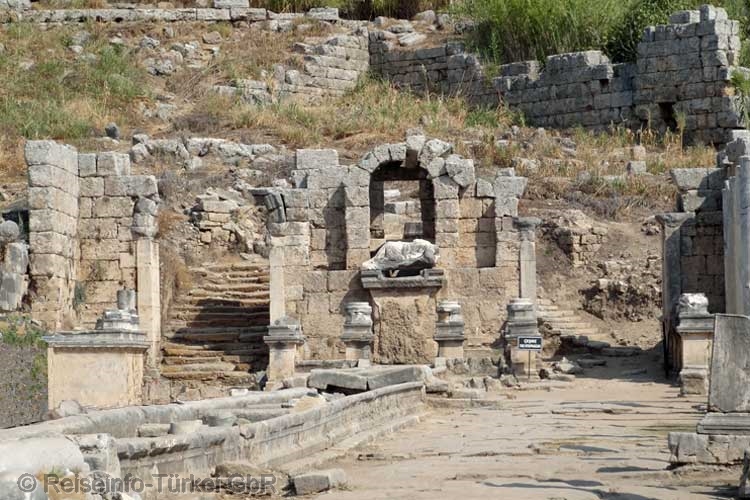 |
|||
|
Above the fountain was a statue of the river god Kestros. From the nymphaeum in the middle of the colonnade street an open channel led water in cascades to a thermal bath at the city gate and probably even further. |
|||
|
|

